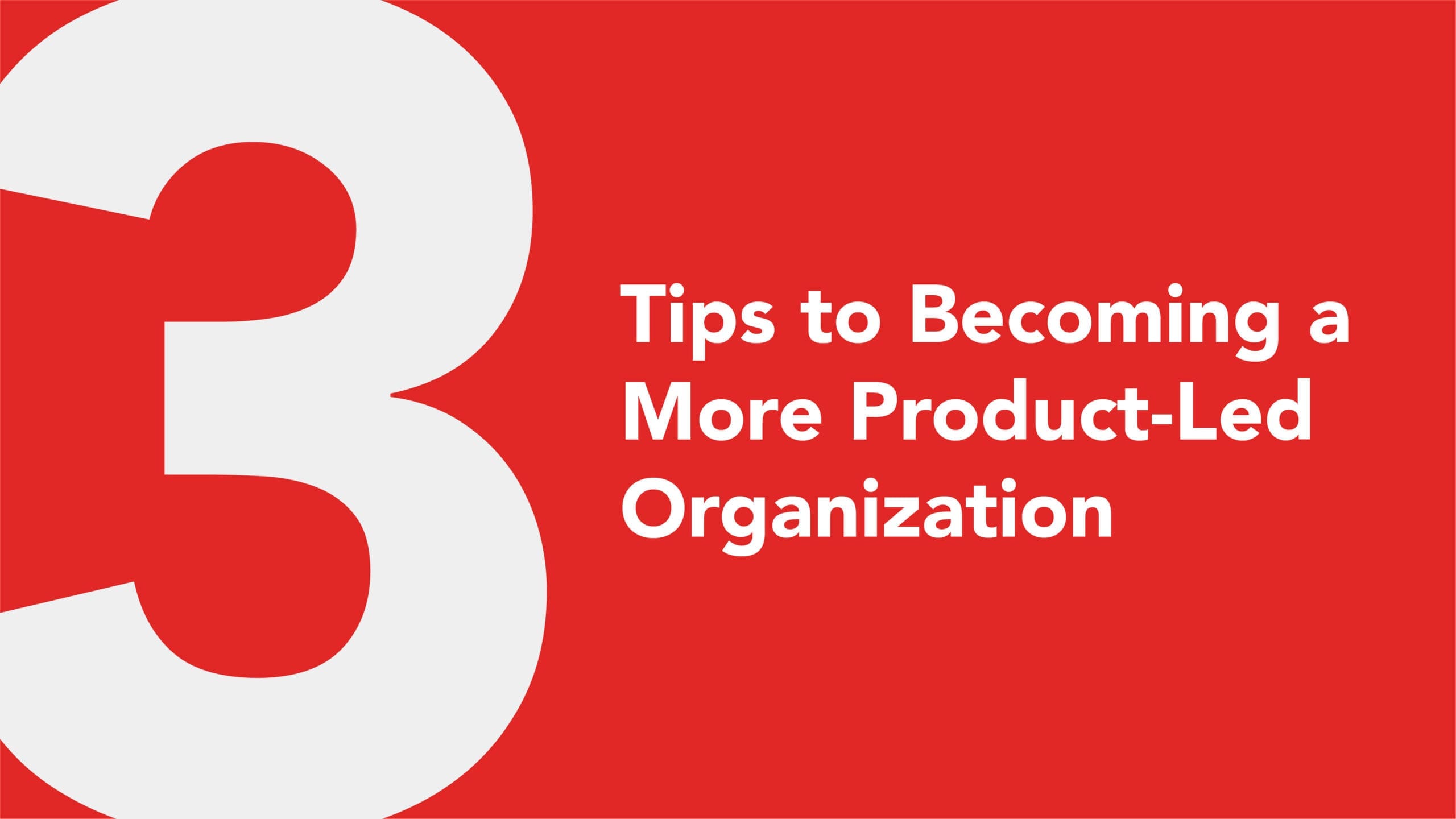Published by
When you hear the term “product,” you might think shoes, cereal, a cell phone — something you can touch or hold in two hands. But today, the word has taken on a whole new meaning and carries greater value, especially for companies looking to become truly product led.
These days, there are many different definitions to product-led growth and can often be moulded to fit an organization’s goal. However, for this article, I’m going to reference a blog on ProductLed.com by Wes Bush, who defines it as a “go-to-market strategy”. In this sense, the product is the primary asset used to gain and retain customers.
It’s about prioritizing the end-to-end user experience in everything you do – from product and pricing, to customer engagement and purchase. In product management, nothing should matter more that addressing customer needs. That’s why, with higher barriers to entry and heightening expectations to contend with, brands are purposefully weaving product into the fabric of the company.
This is in stark contrast to sales-led companies, where the goal is to simply take a buyer from point A to point B in a sales cycle. Although customer acquisition is the lifeblood of any profitable company, it still costs five times as much to acquire new customers than retain existing ones. Product-led companies flip this traditional sales model on its head, and are able to minimize churn, by giving the buyer the “keys” to use the product. This is why we see the likes of streaming giant, Spotify – a classic example of a product-led company – offering one-month trial periods for their premium “no ads” subscription. Users understand how they can benefit from using the product and find value before paying. They then commit to pay when they feel it’s warranted, and Spotify achieves a 46 percent conversion rate in the process. This motivates product-led companies to maintain clarity of focus on making their product the best it can be.
The product-led growth model is typically a strategy reserved for the Software-as-a-Service (SaaS) industry – used by Spotify, Slack, Dropbox, and Salesforce. But how might other organizations take lessons from this durable go-to-market approach? Here are three tips to get you started down the right path.
1. Keep the customer at the center of everything you do
To become product-led, you simply need to obsess over the customer at every stage of the journey. Even at Bottle Rocket, we take lessons learned from SaaS companies in that we collectively organize ourselves around solving the problems of our customers’ customers. We don’t wait to have a contract to show off our “product” (our people, processes, and approach). During our first interaction with a client, we spend time diving into the business problems we must help them solve. Interviews, workshops, and ideation sessions naturally occur, as we give our clients a taste of our “product” to experience the value – not just hear about the (perceived) value from us.
2. Leverage an outcome-based mindset versus an output-oriented mindset
Product-led companies are relentlessly focused on outcomes. This means rather than defining success by the features you release (output), you measure success by the value those features create for your customers and your business (outcomes). Companies that leverage this mindset tend to measure success in impact – the impact the product has on people’s lives and the impact it has on the growth and profitability of the business. They are also known for finding new and creative ways to serve customers that ultimately creates value for the business.
3. Promote a culture that’s designed to ensure customer value
Curating product experiences that customers will love comes from the bottom up. A pillar of becoming product-led is ensuring every team has an influence over the product. At Bottle Rocket, we engrain a “lean MVP” mindset into our DNA to help us flex and regularly attack collaborative product innovation. A traditional Minimum Viable Product (MVP) is a version of a new product that allows teams to provide immediate value and secure feedback from customers with the least effort. We see “lean MVP” as the most efficient path to creating recognizable value, in the form of strategic plans, business cases, and integrations.
So, we’ve looked at how businesses can become a product-led organization, but why would they, what are the benefits?
Benefits of being product-led
Creating value for customers along each stage of journey is what we, as product managers, strive for. Through various tactics, a product-led strategy is an intrinsic part of focusing an organization on each part of a product journey, in order to create the most value for customers. Tactics include combining R&D, sales, and marketing to hone in on improving customer satisfaction, adoption, and usage rates. Add this to the increased agility of a product-led organization and it’s possible to deliver quick and long-lasting value to customers.
Product-led companies rely on data to anticipate when issues may arise in the customers’ product journey. This is vital, as it enables these types of companies to innovate faster by building on customer feedback and adapting their user experience. This process of iteration helps teams use successes and setbacks to drive towards their end goal.
Finally, product-led organizations have flexibility. Flexibility to change and re-write a roadmap when it needs to be adapted. This approach requires you to run vast numbers of experiments, instead of working with a defined set of qualities. Why? Because you can’t base product decisions on perceptions. Instead, you must use direct feedback, sentiment, and user behaviour to guide your decisions. Only then will you have a guide into where your product is delivering and where it’s not, giving you an opportunity to react accordingly.
The future is product-led
Product is no longer simply about the ‘product.’ Instead, it’s about the full end-to-end experience associated with a product. Product-led organizations are leading a critical change in thinking: continuously improve the product experience and leverage valuable customer feedback to do so. As a result, product-led companies can dig deeper and produce valuable outcomes for users, encouraging great loyalty intention.




